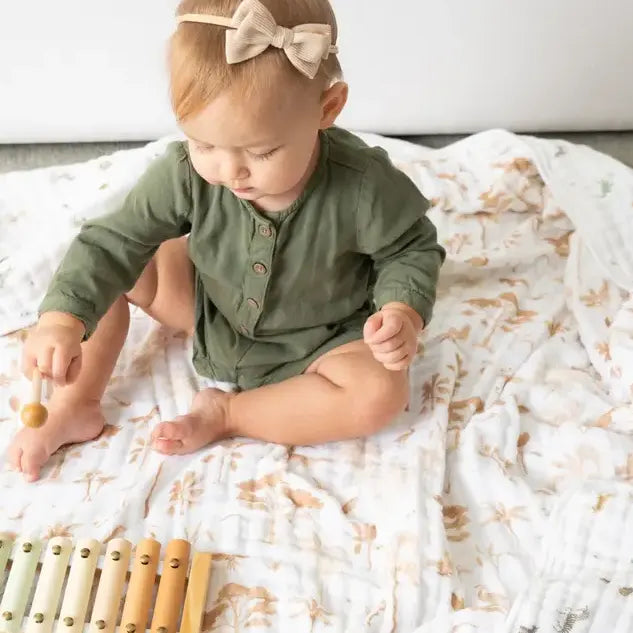WHAT IS MULSIN?
ORIGINALLY POSTED: 17 October 2023
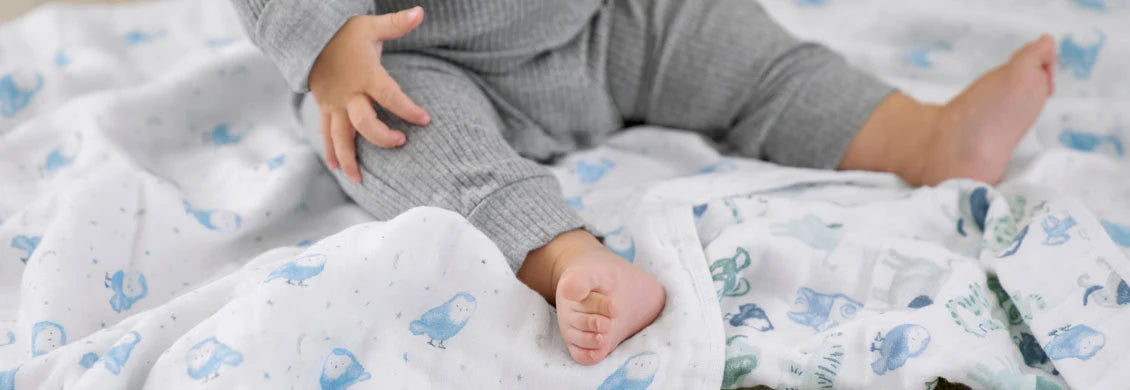
Author: Megan Tencza
As a new or expecting parent, you hear a lot of terms you might not have heard before. “Muslin” or “muslin fabric” might be one of them. If you have heard it before, chances are you haven’t given muslin much thought beyond that it is a type of fabric. Now it’s time to learn!
Keep reading for everything you need to know about muslin fabric and how you can use muslin in your home with your new baby
The History of Muslin: Exploring the Fabric's Roots
Muslin is a type of cotton fabric that is known for its lightweight and soft texture. It has a long history that dates back to ancient times.
Muslin is believed to have originated in the region now known as Bangladesh, which was historically known as Bengal. The word "muslin" is derived from the name of the city of Mosul in Iraq, which was an important center of trade for the fabric in the Middle Ages.
The production of muslin was a major industry in Bengal from the 3rd century BCE to the 19th century CE. The fabric was highly valued for its fine quality, and was exported to many parts of the world, including Europe, the Middle East, and Southeast Asia.
During the Mughal Empire in India, which lasted from the 16th to the 19th century, muslin became even more popular. The Mughal emperors were known for their love of luxury and fine fabrics, and muslin was one of their favorites. The fabric was used for clothing, curtains, and other decorative items.
Muslin production declined in Bengal during the 19th century due to competition from British-made textiles, as well as the introduction of machine-made fabrics. However, the fabric remains an important part of the cultural heritage of the region, and is still produced in small quantities by traditional weavers.
Today, muslin is used for a variety of purposes, including clothing, bedding, and curtains. It is also popular for use in photography and theater, where it is used as a backdrop or to create special effects.
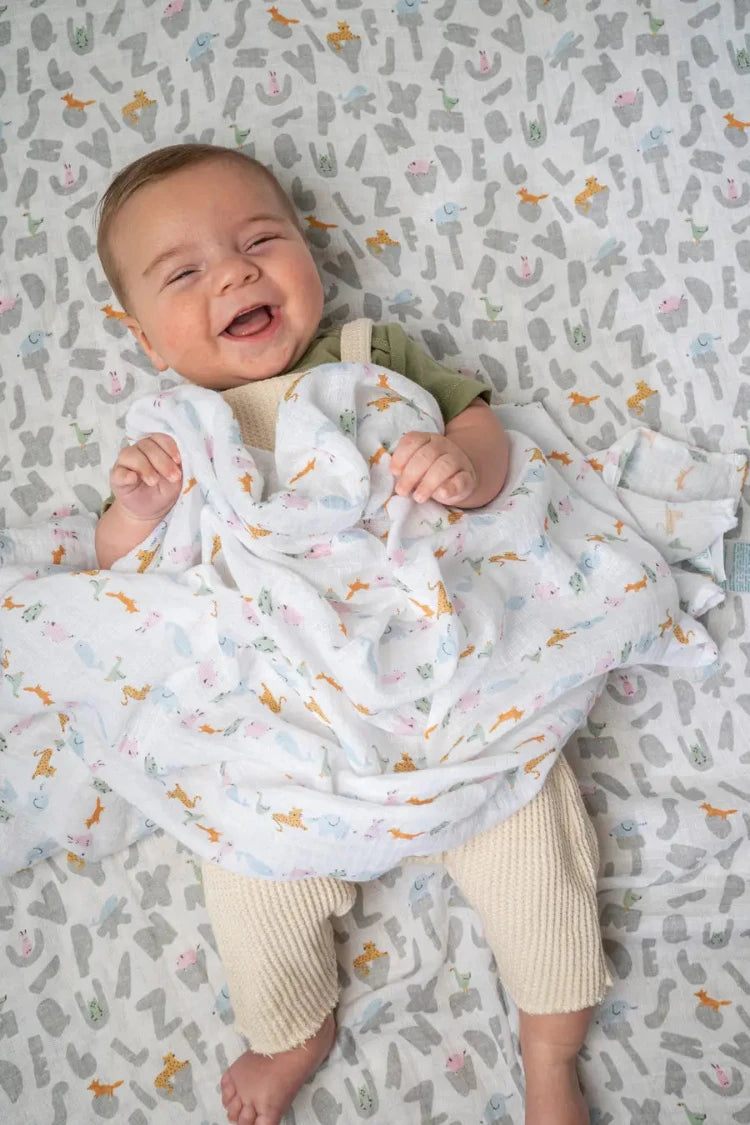
The Many Benefits of Muslin
Muslin fabric has several benefits for babies, which is why it's commonly used in baby products such as swaddle blankets, bibs,burp cloths, and more. Here are some of the benefits of muslin for babies:
- Soft and gentle on baby's skin: Muslin is a lightweight, breathable fabric that is soft and gentle on a baby's delicate skin. It's also hypoallergenic, which means it's less likely to cause allergic reactions.
- Absorbent: Muslin fabric is highly absorbent and can quickly soak up any spills or messes. This makes it an excellent choice for burp cloths and bibs.
- Breathable: Muslin fabric is very breathable, which means it allows air to circulate around the baby's skin. This can help prevent overheating and keep the baby comfortable.
- Versatile: Muslin fabric is very versatile and can be used for a variety of purposes. It can be used as a swaddle, blanket, nursing cover, changing pad cover, and more.
- Durable: Muslin fabric is durable and can withstand multiple washes and uses. This makes it a cost-effective choice for parents who want to invest in high-quality baby products.
Types of Muslin
When it comes to the different types of muslin, it’s important to remember that muslin fabrics come in a variety of forms and weights. Here are the four main types of muslin:
- Guaze: This form of muslin is ultra-lightweight. Typically this muslin fabric is used for clothes and for wound dressing.
- Swiss Muslin: Sheer and lightweight, this type of muslin has raised patterns or dots on it. Typically, you’ll find this muslin fabric used for warmer clothes.
- Mull: This type of muslin is plain and lightweight, usually made from cotton and silk. Mull muslin fabric is typically used for dress underlings.
- Sheeting: As the thickest and coarsest type of muslin, sheeting is used mostly for clothing and hardware.
Muslin vs. Cotton
Many people wonder, “what is cotton muslin?” and “what is the difference between muslin and cotton fabric?” The answer is very simple!
When it comes to the difference between the two, you need to remember that cotton is a type of fiber and muslin is a type of fabric. Not all muslins are made of 100% cotton fabrics since muslin refers to the combination of fiber type, thread size, and weave.
If someone calls a piece “cotton muslin,” they are simply referring to muslin made with 100 cotton, not a mix of other fibers like polyester. Cotton muslin fabric tends to be softest.
Muslin vs. Linen
These two woven fabrics have many similar properties since they are both breathable and lightweight. However, linen tends to be thicker with a lower thread count compared to muslin. As a result, linen does not tend to be as soft as muslin fabric.
Muslin vs. Calico
There are several differences to note between muslin and calico. For starters, calico is a plain weave derived from white, cream, or unbleached cotton. On the other hand, muslin fabric is much finer, lighter, and composed of plain weave cotton.
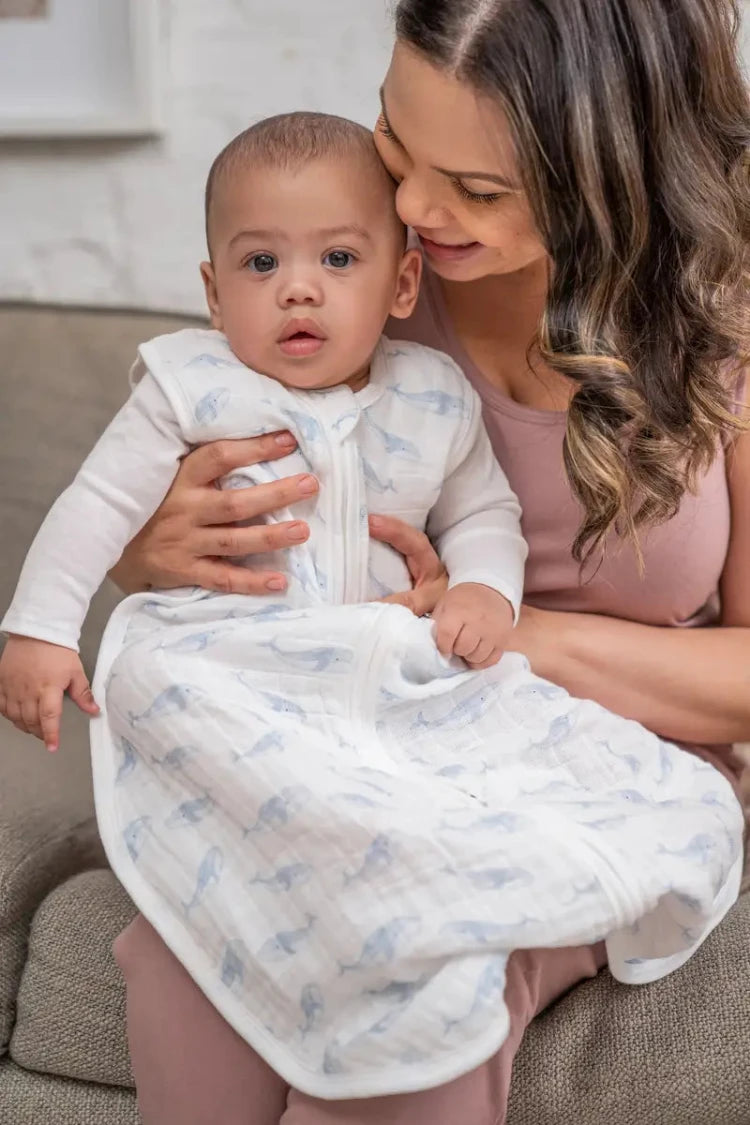
The Uses of Muslin for Babies
At the end of the day, muslin fabric is most well-known for its flexibility when it comes to caring for babies and newborns. These are the top uses of cotton muslin fabric for babies that new parents should know:
- Swaddle Blanket: Because it is so soft and breathable, muslin fabric works great as a swaddle blanket. Swaddling helps little ones feel comfy and cozy by mimicking the secure feeling of being in the womb.
- Sleeping Bag or Sleep Sack: After a swaddle, many parents transition their little ones to sleeping in a sleeping bag or sleep sack. Finding one that’s made of muslin makes it extra comfy for babies while making sure they stay warm without overheating.
- Nursing Cover: If you breastfeed your baby, keeping a muslin fabric blanket on hand when out in public is a simple way to cover up when it’s time to feed your little one.
- Blanket: Since the material is so soft, one of the most common muslin uses entails simply using it as a blanket!
- Burp Cloth: Whenever you're burping your little one after a feeding, throwing a muslin blanket over your shoulder is the perfect absorbent fabric to use! It's also helpful to keep one within reach for any sudden spit ups.
- Washcloths: Why not wash your baby's skin with one of the softest materials available! Not only will it be gentle enough for their delicate skin but it is also very abosrbent!
A Look Into Sustainable Muslin: The New Wave of Eco-Friendly Muslin
Eco-friendly muslin is a type of muslin fabric that is produced using sustainable and environmentally friendly methods. This means that the fabric is made with minimal impact on the environment, and may also be made using organic materials.
Some examples of eco-friendly muslin production methods include:
- Organic Cotton Muslin: Muslin fabric made from organic cotton is grown without the use of synthetic fertilizers, pesticides, or other harmful chemicals. This reduces the environmental impact of cotton production and helps protect the health of farmers and workers.
- Natural dyes: Eco-friendly muslin may be dyed using natural dyes, which are made from plant-based materials and do not contain harmful chemicals or heavy metals.
- Water conservation: Eco-friendly muslin production methods may also focus on water conservation, such as using rainwater harvesting techniques and recycling water.
- Ethical production: Eco-friendly muslin may be produced in facilities that prioritize fair labor practices and worker safety.
Many parents find it important to buy organic cotton muslin for their baby because it reduces their exposure to harmful chemicals, is better for the environment, and is often softer and more comfortable. Additionally, organic cotton muslin is hypoallergenic, making it a safer choice for babies with sensitive skin or allergies.
OUR FAVOURITE ORGANIC COTTON MUSLIN PRODUCTS
All aden+anais organic cotton muslin products are GOTS certified. Learn more about the GOTS certification here.
-
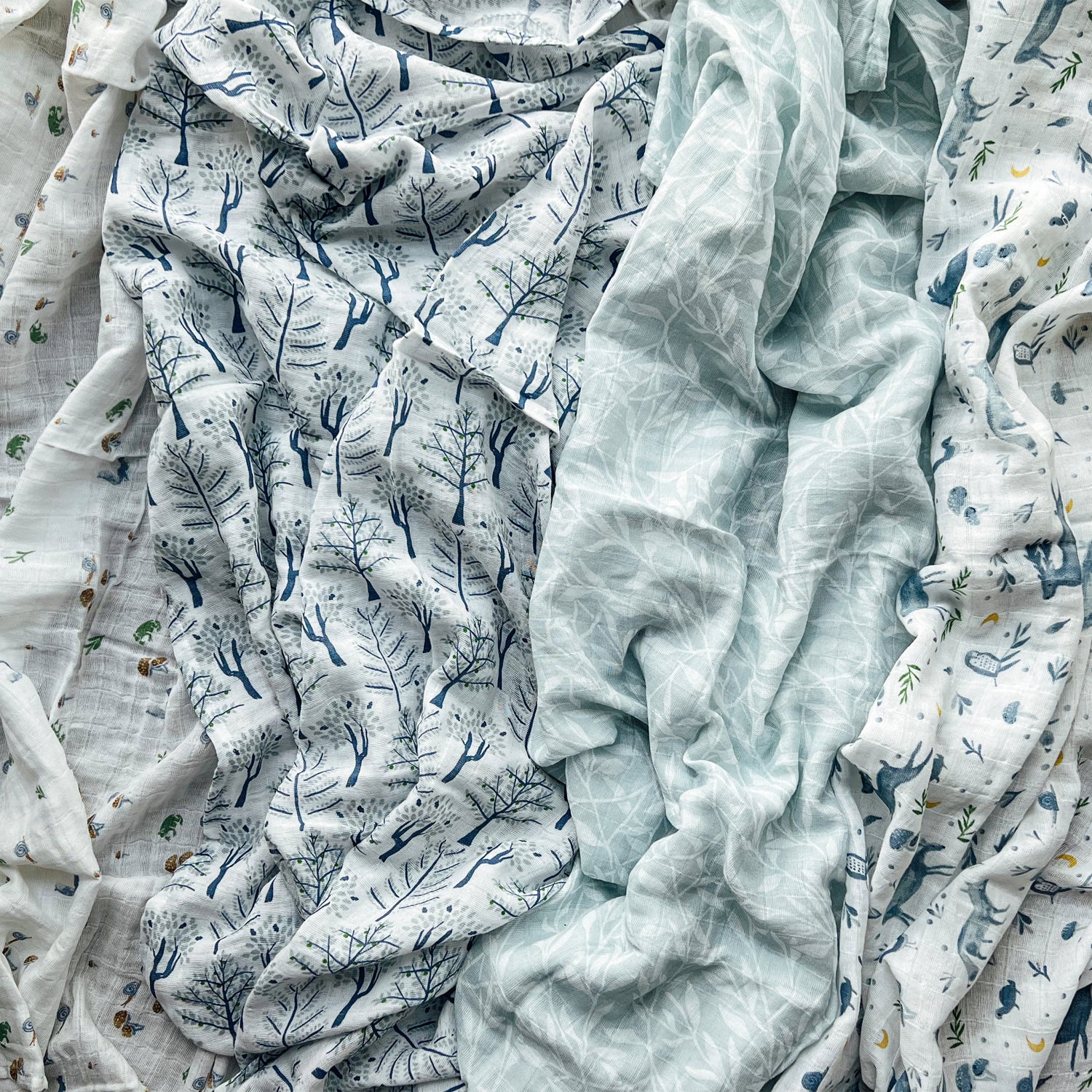
Organic Swaddles
Swaddles don't get much more eco-friendly than those from aden + anais....
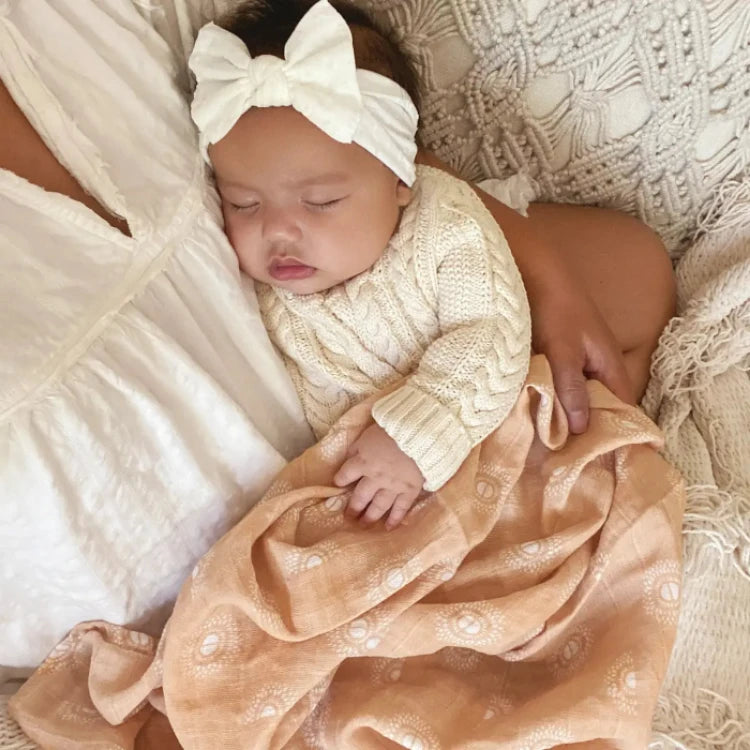
Aden+Anais ♥ Muslin
We might be the orginial creator of the cotton muslin swaddle!
We were founded by an innovative Aussie mom who wanted to bring her love of luxe, breathable, swaddles to the masses.
She knew the softer-with-every-wash fabric + a commitment to high-quality products would exceed your expectations (+ they did!).
Our swaddle blankets do-it-all. They can be used at least five different ways! From a burp cloth, to a nursing cover to a clean changing area, they are incredibly versatile and perfect for on-the-go. Why carry five different items in your nappy bag when all you need is a cotton muslin swaddle blanket!
Caring for Muslin: How to Protect and Maintain the Fabric
What makes muslin such a great choice for parents is the fact that muslin fabric is easy to care for. For starters, muslin is machine washable! Simply throw the muslin in with everything else on a cold cycle.
To preserve the softness of muslin, we suggest using tumble dry low or even hang drying. Thankfully, muslin is known for drying quickly, even when hung indoors!
As with anything that your little one comes in contact with, you’ll want to keep their sensitive skin in mind. Consider washing any muslin in a chemical-free detergent to limit the risk of reaction.
Now that you have your muslin basics covered, it’s time to see for yourself why muslin fabric is a must-have for parents!
Learn more about how to care for your muslin here!

